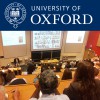IceCube: Opening a New Window on the Universe from the South Pole
Professor Francis Halzen is Wisconsin IceCube Particle Astrophysics Center and Department of Physics, University of Wisconsin - Madison.
Prof Halzen is a theoretician studying problems at the interface of particle physics, astrophysics and cosmology. In 1987 he began working on the AMANDA experiment, a prototype neutrino telescope buried under the South Pole. It provided a proof-of-concept for IceCube, a kilometer-scale detector completed in 2010 which in 2013 discovered an extraterrestrial flux of high energy neutrinos. More recently in 2018 the first cosmic source of such neutrinos was tentatively identified. IceCube has also made precision measurements of neutrino oscillations, searched for dark matter and even contributed to our understanding of glaciology. Prof Halzen will discuss these achievements as well as plans for a much bigger detector that will firmly establish neutrino astronomy as a new window on the universe.
The IceCube project has transformed a cubic kilometre of natural Antarctic ice into a neutrino detector. The instrument detects more than 100,000 neutrinos per year in the GeV to 10,000 TeV energy range. Among those, we have isolated a flux of high-energy neutrinos of cosmic origin. We will explore the use of IceCube data for neutrino physics and astrophysics emphasizing the significance of the discovery of cosmic neutrinos. We identified their first source: alerted by IceCube on September 22, 2017, several astronomical telescopes pinpointed a flaring galaxy powered by an active supermassive black hole, as the source of a cosmic neutrino with an energy of 310 TeV. Most importantly, the large cosmic neutrino flux observed implies that the Universe’s energy density in high-energy neutrinos is close to that in gamma rays, suggesting that the sources are connected and that a multitude of astronomical objects await discovery.




